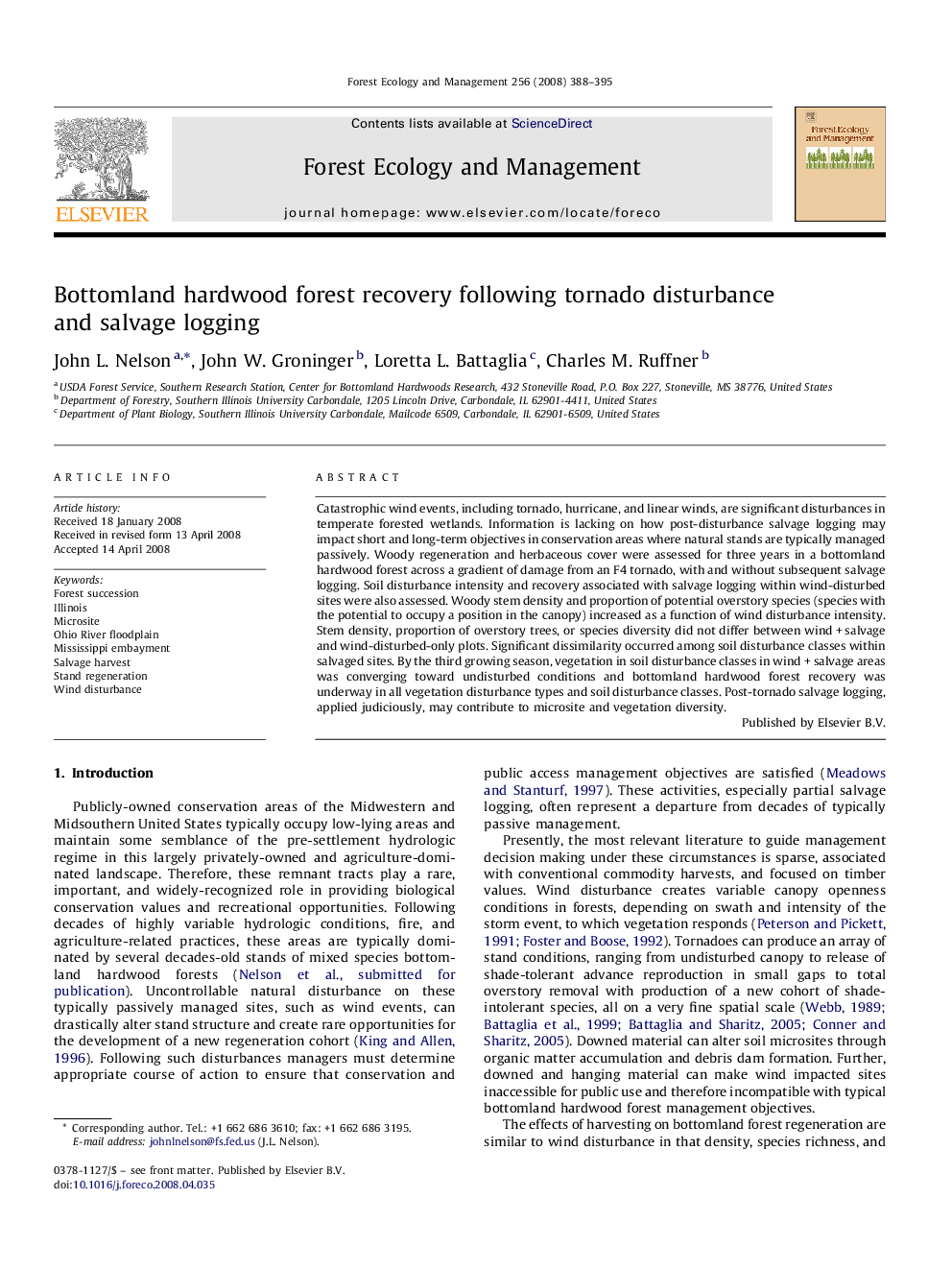| Article ID | Journal | Published Year | Pages | File Type |
|---|---|---|---|---|
| 88898 | Forest Ecology and Management | 2008 | 8 Pages |
Catastrophic wind events, including tornado, hurricane, and linear winds, are significant disturbances in temperate forested wetlands. Information is lacking on how post-disturbance salvage logging may impact short and long-term objectives in conservation areas where natural stands are typically managed passively. Woody regeneration and herbaceous cover were assessed for three years in a bottomland hardwood forest across a gradient of damage from an F4 tornado, with and without subsequent salvage logging. Soil disturbance intensity and recovery associated with salvage logging within wind-disturbed sites were also assessed. Woody stem density and proportion of potential overstory species (species with the potential to occupy a position in the canopy) increased as a function of wind disturbance intensity. Stem density, proportion of overstory trees, or species diversity did not differ between wind + salvage and wind-disturbed-only plots. Significant dissimilarity occurred among soil disturbance classes within salvaged sites. By the third growing season, vegetation in soil disturbance classes in wind + salvage areas was converging toward undisturbed conditions and bottomland hardwood forest recovery was underway in all vegetation disturbance types and soil disturbance classes. Post-tornado salvage logging, applied judiciously, may contribute to microsite and vegetation diversity.
